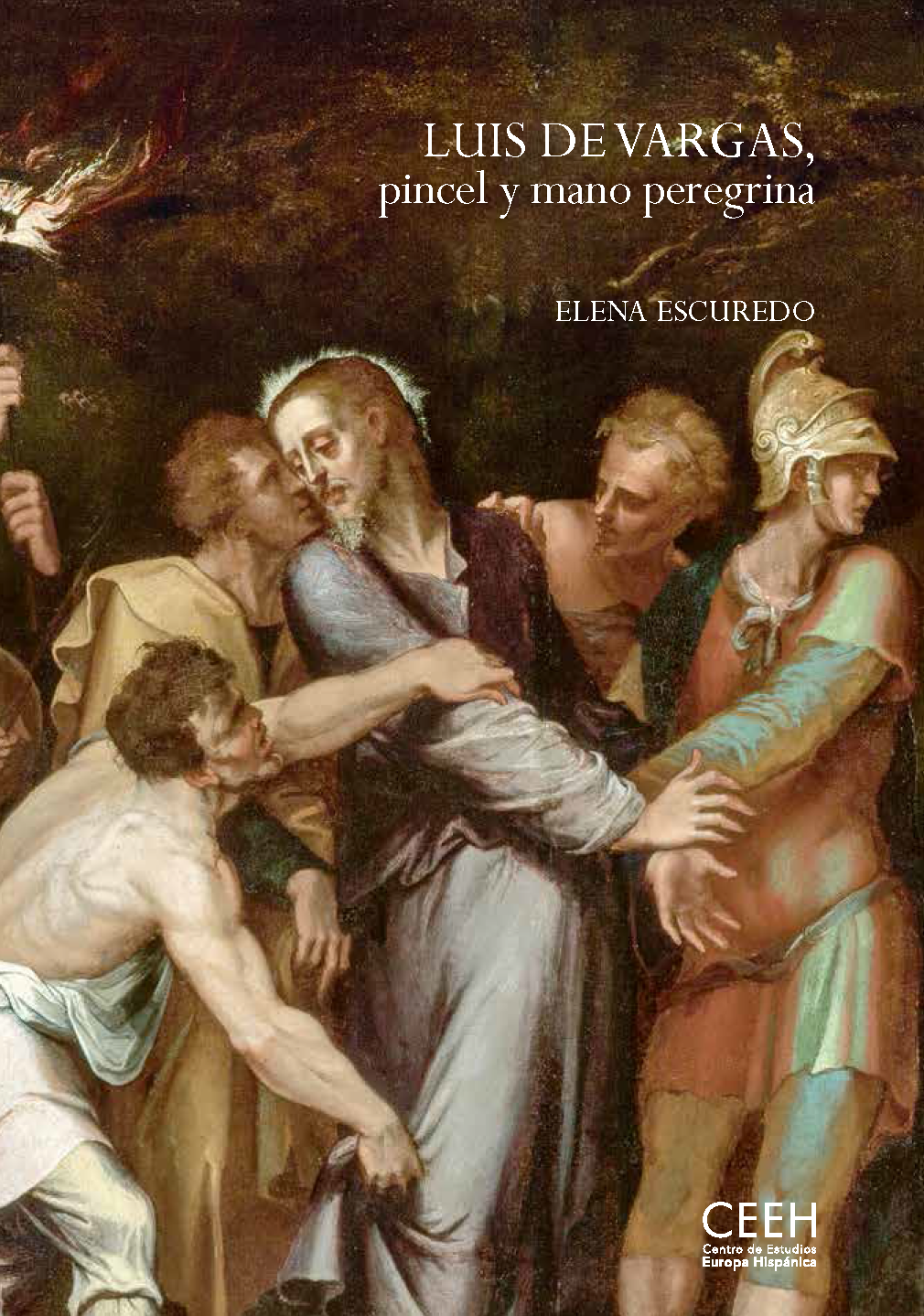Author
Elena Escuredo
Characteristics
440 pages; 124 colour illustrations; flapped paperback; 17 x 24,5 cm
Publication
Spanish; preface by Benito Navarrete Prieto; 2025; with the help of the Ministry of Culture
ISBN
978-84-18760-56-3
Price
€33,66
Luis de Vargas, a painter seldom studied despite his importance to sixteenth-century Spanish art, returned to Seville in 1550 after two long decades in Italy and burst onto the local art scene, ‘blazing a new trail with his light’, as Pacheco put it. While Hernando de Esturmio (Ferdinand Sturm) and Pedro de Campaña (Pieter Kempeneer) had marked the beginning of a new stage in Sevillian painting in 1536, Vargas superseded this Flemish influence and introduced the maniera inherited from Perino del Vaga, Giorgio Vasari and Francesco Salviati, becoming a revered, sought-after and imitated artist. Written sources highlight his skill as a portraitist, but he must also have been an extraordinary fresco painter. However, the key to understanding his Roman training and later work lies in his drawings, which reflect the aesthetic universe that characterised his entire oeuvre.
Besides highlighting Vargas’s social background and his contribution to Sevillian painting, this book thoroughly reviews the primary sources, providing previously unknown details about his family life and documenting no longer extant works about which there was no information. As well as discovering a few pictures and attributing new panel paintings, it includes an in-depth study of several of Vargas’s main altarpieces which sheds light on his painting and formal references, but also on his clientele and the complex spiritual atmosphere of Seville at the time. To round off, it offers the first survey of Vargas’s critical fortunes and the painters who trained with him. Although his surviving output, including panels and altarpieces, numbers no more than fifteen pieces, Vargas played a decisive role in the subsequent development of Sevillian painting.
Elena Escuredo holds a PhD in Art History from the University of Seville, where she teaches. She specialises in the sixteenth century, and her research focuses on Spanish painting, connections with Italy and the relationship between art and spirituality. She has enjoyed residencies and research contracts in Rome, Naples, Los Angeles and Paris, where she co-organised the international conference Pacheco à la plume. Le maître de Velázquez ou la pensée de l’art. She is involved the CIRIMA R&D + Innovation project ‘Circulación de la imagen en la geografía artística del mundo hispánico en la Edad Moderna’.
“Nadie podrá negar la destreza de Escuredo en el arduo trabajo de archivo, porque el periplo vital hispalense y los lazos familiares y gremiales de Vargas están perfectamente trazados, así como los de otros tantos artistas que, al hilo de su trabajo, ha sabido desenterrar, conectar e interpretar, dando luz al segundo tercio del siglo XVI hispalense”, Benito Navarrete Prieto, author of the preface

